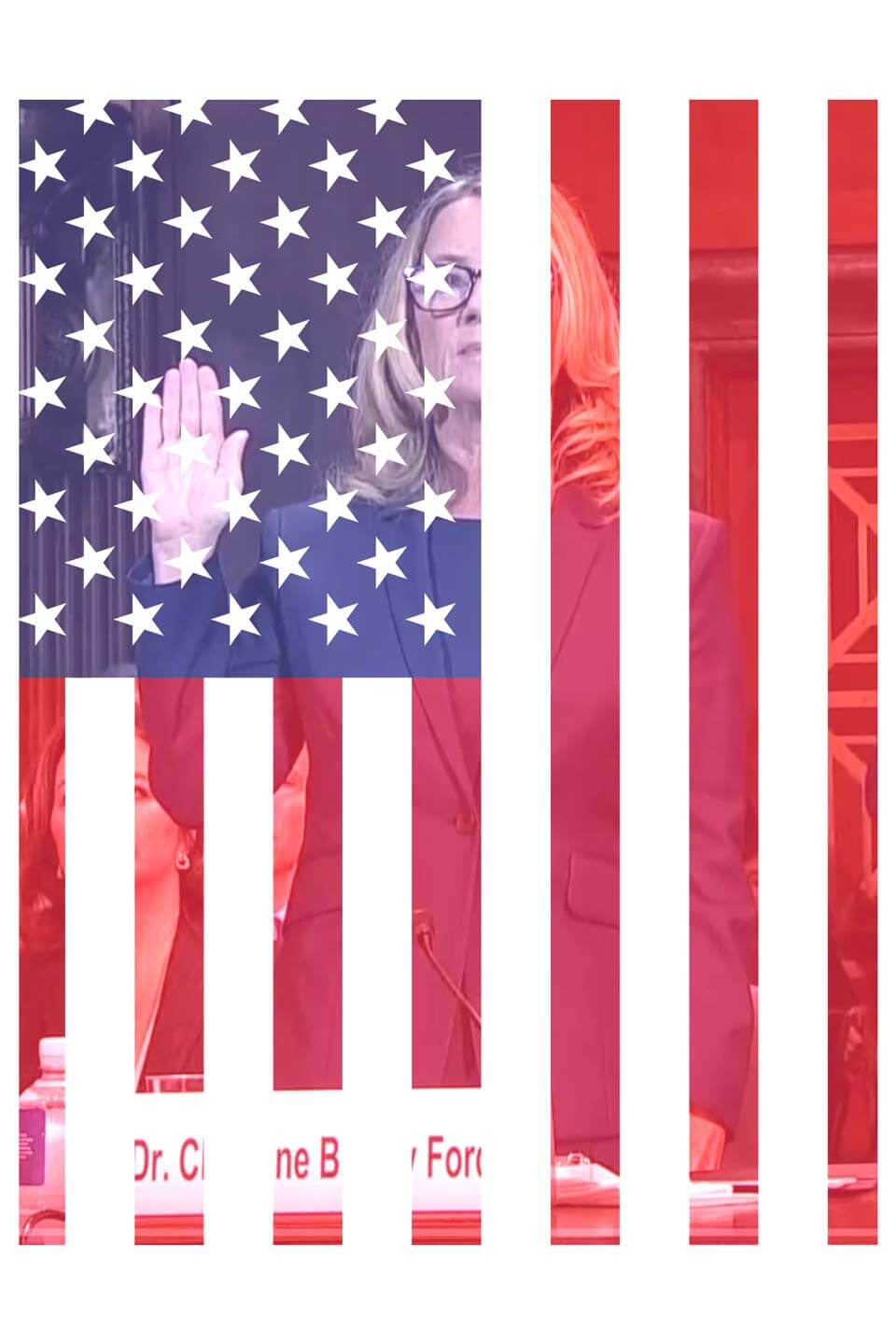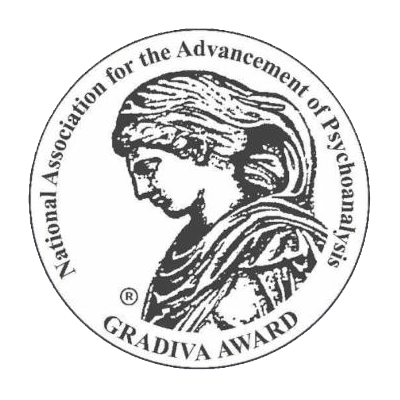EDITORIAL: BRAVERY
by Hattie Myers

“Acts of bravery stand out in our minds because they signify a common belief system that we, individually and collectively, matter.”
Coline Covington1
“Bravery,” Coline Covington, a psychoanalyst living in London, told me last spring, “exists in the eyes of the beholder. No one who has done something that other people consider brave or even heroic feels that they themselves have been brave. To a person, they feel they had no choice. Not only that, each one of them felt badly they couldn’t do more. I am thinking of writing an essay for ROOM about it.”
But Covington didn’t write that essay. Instead, she wrote “No Joking Matter.” “ROOM may not want to print it,” she said. “Things change so fast every day that Trump’s visit to London may be old news by October, but this is what I had to write.”
This morning, well after this issue was in production, I got a call from a psychoanalyst in New York: “You may not have room for this in ROOM, but I have an idea about the Kavanaugh hearings that I can’t stop thinking about and no one is talking about it.” Within two hours, Joseph Cancelmo’s essay “The Elephant (Walk) in the Room” arrived. He was right. We stopped the virtual press in order to include the thing that no one was talking about in an already very full issue.
It is not the first time that psychoanalysts are seeing something and feel they have to say something. It’s not the first time that we have been stopped in our tracks to make room for a new way to think about something.
In 1941, Ernst Kris, newly arrived in the US under an “enemy alien visa,” gave a paper to the Boston Psychoanalytic called “On the Dangers of Propaganda.” Perhaps because Kris had come to psychoanalysis through the field of art history, he was particularly attuned to the power of image and media. “My reason for dealing with this subject is not the challenge which its highly flavored topicality may exercise,” he told the Bostonians. “It is rather a sense of duty… psychoanalytical experience and theory have largely contributed to a better understanding of some of the phenomena of human suggestibility.” Kris linked our susceptibility to suggestion to our infantile beginnings, our longing for love and protection. He ended his talk with a call to action, saying that with the advent of “mass communication” (by which, in 1941, he meant radio and film), governments must now attend to new pressures and new responsibilities in order to protect their countries from totalitarianism.2
ROOM 10.18 stands out in the minds of our whole editorial board as our bravest issue. The essayists, poets, and artists in ROOM 10.18 are writing, drawing, and, in some cases, figuratively screaming about racism, sexism, the erosion of the working and middle class, the influence of propaganda and lies, the erosion of morality, and the possibility of a totalitarian state. Psychoanalytic interpretations like Kris’s and the contributions that ROOM authors are making expand our perspective. It is no coincidence that the points that are being brought to bear here are being made two weeks before what will, perhaps, come to be the most important US election of our lifetimes. These are not speculative essays. They are authoritative, confident, and clarifying. We are free to accept them or reject them, but we cannot ignore them.
Delia Battin, in her essay “A Tear in the Fabric” and Michael Diamond in “Taking the U.S. Personally,” do something similar to what Kris did in 1941. Battin explains the psychic consequences for children when the structure of a family is torn apart. Diamond explains, in psychodynamic terms, what happens in large groups when leadership fails to maintain the integrity of our public space. Like Kris, both Diamond and Battin use their psychoanalytic understanding of human nature to suggest actions they feel must be taken to protect the traumatized children on our borders and to protect our traumatized country as a whole.
Elizabeth Trawick and Lama Khouri take what from the outside seems a very brave step indeed, and they share their own stories. “In spite of her shame,” Trawick tells us in “The Lynching Museum,” in spite of listeners “responding with disdainful faces and comments that seem to show they have not grasped the full significance of the event,” she tells of an unforgettable incident she carries from her childhood in the racist south. Lama Khouri confides to us the pain she feels knowing others suspect her as a terrorist and don’t see her as fully human. In “Buried Neck Deep,” Khouri shares a dream she dreamt fourteen years ago that remains seared in her mind, while the meaning she has drawn from her dream has changed over time and given her strength.
In their essays, Carolyn Ellman and Coline Covington want us to know that they are drawing strength from historians. Underlying their generous reporting of what they are learning, is a not-so-quiet desperation to spread the word and get the facts out. Ellman’s “What Happened to the Democrats?” reminds us of Kris’s and Diamond’s warning, that we are all susceptible to hearing what we want to hear, and this fact puts our country in danger. In “No Joking Matter,” Covington reminds us of something else psychoanalysis has taught us: we are also susceptible to not remembering. We repress history at our own peril.
C. Jama Adams’s essay “Outside of History” drives home the ways the practice of psychoanalysis must reclaim history anew. Adams insists that a psychoanalysis whose focus is exclusively on the psychic world must find new ways to engage with the hidden consequences of history beyond the transmission of trauma. The transmission of privilege and the transmission of culture and class, Adams argues, have deep sociological and intrapsychic implications that psychoanalysis has not historically acknowledged.
In his essay “Psychoanalysis’ Fourth Wall,” Isaac Tylim brings his historical and international perspective as he questions the illusion that psychoanalysis can be sequestered from the world in which it is practiced. Aneta Stojnić, who, like Kris, entered psychoanalysis through her study of the arts, describes in “Estrangement Effect: Politics and the Psychoanalytic Theatre” certain similarities she sees between psychoanalytic practice and the way Brecht reconceived theatre: two arts created, not to mirror reality, but to shape it.
Changing our future by engaging with our past is a cornerstone of psychoanalytic action. If there is a single thread that runs through this issue it is this: our personal history, the history of whatever country or community we come from, and even the history of our psychoanalytic field have brought us to where we are today. The act of owning our histories solidifies and expands the connections we have to ourselves and to our community. As ROOM 10.18 reminds us, taking hold of history is a political act. If these essays look brave, it is because it matters deeply.
Two weeks before the election, it matters now. ■
- Hattie Myers is a Training and Supervising Psychoanalyst at IPTAR. Email: hmyers@analytic-room.com
- (1) From No Choice but to Act: Psychoanalytic Thoughts on Bravery and Dissent, a chapter in Covington’s, new book, For Goodness Sake: Bravery, Patriotism and Identity, to be published by Phoenix Publishing House, 2020.
- (2) Kris was a colleague of Freud’s who fled Vienna in1938. Along with Hans Speier, Kris created and directed the Research Project for Totalitarian Communication, which was funded for three years by the Rockefeller Foundation. The Project worked with closely with the US War Department while producing dozens of papers and seminars.
- This United States Congress image is in the public domain. Via Wikipedia.
ROOM is entirely dependent upon reader support. Please consider helping ROOM today with a tax-deductible donation. Any amount is deeply appreciated. |




